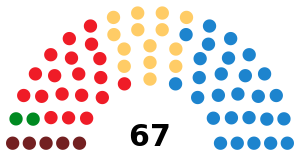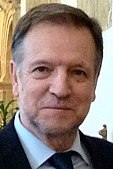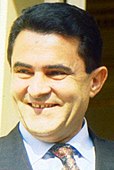1995 Aragonese regional election
| ||||||||||||||||||||||||||||||||||||||||||||||||||||||||||||||||||||||||||||||||||
All 67 seats in the Cortes of Aragon 34 seats needed for a majority | ||||||||||||||||||||||||||||||||||||||||||||||||||||||||||||||||||||||||||||||||||
|---|---|---|---|---|---|---|---|---|---|---|---|---|---|---|---|---|---|---|---|---|---|---|---|---|---|---|---|---|---|---|---|---|---|---|---|---|---|---|---|---|---|---|---|---|---|---|---|---|---|---|---|---|---|---|---|---|---|---|---|---|---|---|---|---|---|---|---|---|---|---|---|---|---|---|---|---|---|---|---|---|---|---|
| Registered | 993,975 | |||||||||||||||||||||||||||||||||||||||||||||||||||||||||||||||||||||||||||||||||
| Turnout | 706,954 (71.1%) | |||||||||||||||||||||||||||||||||||||||||||||||||||||||||||||||||||||||||||||||||
| ||||||||||||||||||||||||||||||||||||||||||||||||||||||||||||||||||||||||||||||||||
 Constituency results map for the Cortes of Aragon | ||||||||||||||||||||||||||||||||||||||||||||||||||||||||||||||||||||||||||||||||||
| ||||||||||||||||||||||||||||||||||||||||||||||||||||||||||||||||||||||||||||||||||
The 1995 Aragonese regional election was held on Sunday, 28 May 1995, to elect the 4th Cortes of the Autonomous Community of Aragon. All 67 seats in the Cortes were up for election. The election was held simultaneously with regional elections in 12 other autonomous communities and local elections all throughout Spain.
The election saw a marked increase for the People's Party (PP), which went on to win the election doubling its 1991 vote and gaining ten seats. Much of the increase came at the expense of the Spanish Socialist Workers' Party (PSOE), at the moment beset by corruption scandals. The Aragonese Party (PAR) lost ground for the second consecutive election and was displaced to 3rd place. United Left (IU) improved its position while the left-wing regionalist Aragonese Union (CHA) won seats in the Courts for the first time.
The new legislature elected Santiago Lanzuela as the first PP President of Aragon by 41 votes to 26. The PP and PAR deputies backed Lanzuela while PSOE, CHA and IU voted against. Lanzuela headed a PP administration with the initial support of the PAR.
Overview
Background
The previous legislature had been tightly divided between the left and right blocs, with an independent, former PP deputy holding the balance of power. This had resulted in a coalition between the PP and PAR being replaced by a PSOE administration in 1993. However, legal difficulties had forced the resignation of the PSOE Aragonese President José Marco in January 1995, being replaced by party colleague Ramón Tejedor. The PSOE Federal Executive designated Marcelino Iglesias as candidate for President in the 1995 election, marginalizing Marco from the election of the regional candidates.[1]
Electoral system
The Cortes of Aragon were the devolved, unicameral legislature of the autonomous community of Aragon, having legislative power in regional matters as defined by the Spanish Constitution and the Aragonese Statute of Autonomy, as well as the ability to vote confidence in or withdraw it from a President of the Government.[2] Voting for the Cortes was on the basis of universal suffrage, which comprised all nationals over eighteen, registered in Aragon and in full enjoyment of their political rights.
The 67 members of the Cortes of Aragon were elected using the D'Hondt method and a closed list proportional representation, with a threshold of 3 percent of valid votes—which included blank ballots—being applied regionally. Parties not reaching the threshold were not taken into consideration for seat distribution. Additionally, the use of the D'Hondt method might result in an effective threshold over three percent, depending on the district magnitude.[3] Seats were allocated to constituencies, corresponding to the provinces of Huesca, Teruel and Zaragoza. Each constituency was entitled to an initial minimum of 13 seats, with the remaining 28 allocated among the constituencies in proportion to their populations on the condition that the seat to population ratio in the most populated province did not exceed 2.75 times that of the least populated one.[2][4]
The electoral law provided that parties, federations, coalitions and groupings of electors were allowed to present lists of candidates. However, groupings of electors were required to secure the signature of at least 1 percent of the electors registered in the constituency for which they sought election. Electors were barred from signing for more than one list of candidates. Concurrently, parties and federations intending to enter in coalition to take part jointly at an election were required to inform the relevant Electoral Commission within ten days of the election being called.[4][5][6]
Election date
The term of the Cortes of Aragon expired four years after the date of their previous election. Elections to the Cortes were fixed for the fourth Sunday of May every four years. The previous election was held on 26 May 1991, setting the election date for the Cortes on Sunday, 28 May 1995.[2][4][5][6]
The Cortes of Aragon could not be dissolved before the date of expiry of parliament except in the event of an investiture process failing to elect a regional President within a two-month period from the first ballot. In such a case, the Cortes were to be automatically dissolved and a snap election called, with elected deputies merely serving out what remained of their four-year terms.[2]
Results
Overall
 | ||||||
| Parties and coalitions | Popular vote | Seats | ||||
|---|---|---|---|---|---|---|
| Votes | % | ±pp | Total | +/− | ||
| width="1" bgcolor="Template:People's Party of Aragon/meta/color"| | People's Party (PP) | 263,524 | 37.50 | +16.82 | 27 | +10 |
| bgcolor="Template:Socialists' Party of Aragon/meta/color"| | Spanish Socialist Workers' Party (PSOE) | 180,728 | 25.72 | –14.62 | 19 | –11 |
| bgcolor="Template:Aragonese Party/meta/color"| | Aragonese Party (PAR) | 143,573 | 20.43 | –4.25 | 14 | –3 |
| bgcolor="Template:United Left of Aragon/meta/color"| | United Left of Aragon (IU) | 64,685 | 9.20 | +2.46 | 5 | +2 |
| bgcolor="Template:Chunta Aragonesista/meta/color"| | Aragonese Union (CHA) | 34,077 | 4.85 | +2.55 | 2 | +2 |
| Parties with less than 1.0% of the vote | 5,059 | 0.72 | — | 0 | ±0 | |
|---|---|---|---|---|---|---|
| Platform of Independents of Spain (PIE) | 2,349 | 0.33 | New | 0 | ±0 | |
| Aragonese Unity (UA) | 1,342 | 0.19 | New | 0 | ±0 | |
| bgcolor="Template:SOS Nature/meta/color"| | SOS Nature (SOS) | 923 | 0.13 | New | 0 | ±0 |
| bgcolor="Template:Falange Española de las JONS (1976)/meta/color"| | Spanish Phalanx of the CNSO (FE–JONS) | 445 | 0.06 | New | 0 | ±0 |
| Blank ballots | 11,098 | 1.58 | +0.28 | ||
| Total | 702,744 | 67 | ±0 | ||
| Valid votes | 702,744 | 99.40 | +0.10 | ||
| Invalid votes | 4,210 | 0.60 | –0.10 | ||
| Votes cast / turnout | 706,954 | 71.12 | +6.73 | ||
| Abstentions | 287,021 | 28.88 | –6.73 | ||
| Registered voters | 993,975 | ||||
| Sources[7][8] | |||||
Distribution by constituency
| Constituency | PP | PSOE | PAR | IU | CHA | |||||
|---|---|---|---|---|---|---|---|---|---|---|
| colspan="2" style="background:Template:People's Party of Aragon/meta/color"| | colspan="2" style="background:Template:Socialists' Party of Aragon/meta/color"| | colspan="2" style="background:Template:Aragonese Party/meta/color"| | colspan="2" style="background:Template:United Left of Aragon/meta/color"| | colspan="2" style="background:Template:Chunta Aragonesista/meta/color"| | ||||||
| % | S | % | S | % | S | % | S | % | S | |
| Huesca | style="background:Template:People's Party of Aragon/meta/color; color:white;"| 33.2 | 7 | 31.7 | 6 | 21.4 | 4 | 6.8 | 1 | 4.1 | − |
| Teruel | style="background:Template:People's Party of Aragon/meta/color; color:white;"| 40.8 | 7 | 31.6 | 5 | 18.3 | 3 | 5.6 | 1 | 2.1 | − |
| Zaragoza | style="background:Template:People's Party of Aragon/meta/color; color:white;"| 38.0 | 13 | 23.1 | 8 | 20.6 | 7 | 10.5 | 3 | 5.5 | 2 |
| Total | style="background:Template:People's Party of Aragon/meta/color; color:white;"| 37.5 | 27 | 25.7 | 19 | 20.4 | 14 | 9.2 | 5 | 4.8 | 2 |
References
- ^ "The PSOE marginalizes Marco from the designation of the Aragonese candidates" (in Spanish). El País. 1995-02-16.
{{cite web}}: Italic or bold markup not allowed in:|publisher=(help) - ^ a b c d Statute of Autonomy of Aragon of 1982. Official State Gazette (Organic Law 8) (in Spanish). 10 August 1982. Retrieved 17 September 2017.
- ^ Gallagher, Michael (30 July 2012). "Effective threshold in electoral systems". Trinity College, Dublin. Retrieved 22 July 2017.
- ^ a b c Autonomous Community of Aragon Electoral Law of 1987. Official Gazette of Aragon (Law 2) (in Spanish). 12 February 1987. Retrieved 17 September 2017.
- ^ a b General Electoral System Organic Law of 1985. Official State Gazette (Organic Law 5) (in Spanish). 19 June 1985. Retrieved 28 December 2016.
- ^ a b "Representation of the people Institutional Act". juntaelectoralcentral.es. Central Electoral Commission. Retrieved 16 June 2017.
- ^ "Cortes of Aragon election results, 28 May 1995" (PDF). juntaelectoralcentral.es (in Spanish). Electoral Commission of Aragon. 21 June 1995. Retrieved 26 September 2017.
- ^ "Cortes of Aragon elections since 1983". historiaelectoral.com (in Spanish). Electoral History. Retrieved 26 September 2017.





